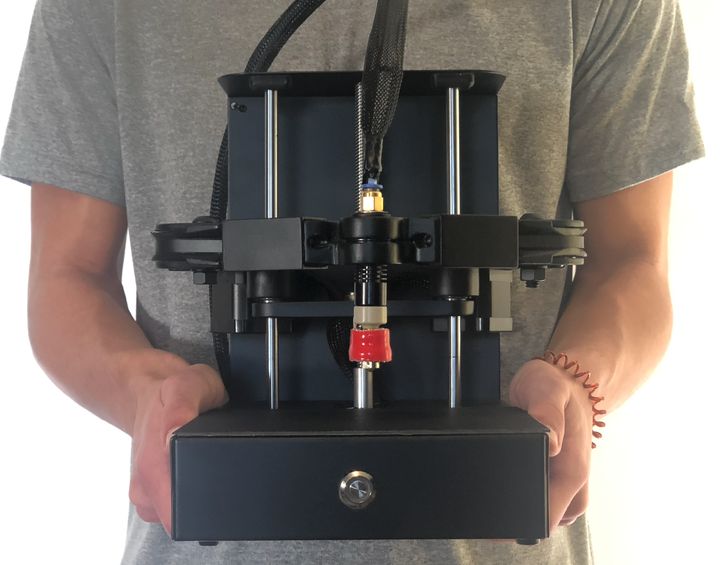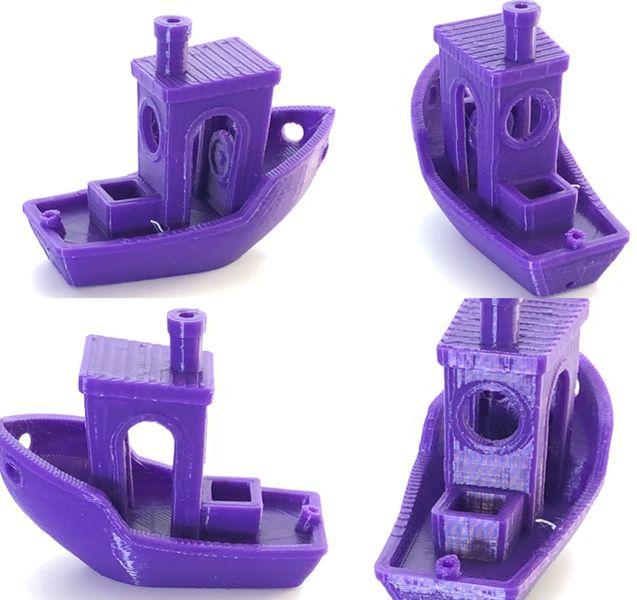
A new Kickstarter project features a 3D printer with the most unusual motion system.
Most 3D printers use a Cartesian system, where there are three linear axes of motion. There are differing ways on how to implement this arrangement, such as direct drive, or more complex like the coreXY concept. The Plybot uses a variation most 3D printer operators have never seen.
We have been aware of the Plybot concept for a couple of years now, having first seen them in 2018. At that time they offered a 3D printer kit for the ridiculously low price of US$110. In fact, that price is still ridiculously low. The price was partly so low due to the use of inexpensive material — plywood, hence their product name.
In 2018 they said the project would be forthcoming “this summer”. That time has long passed.
But now they’re back and there have been some notable changes.
A new Kickstarter has appeared that launches their latest device, also named the Plybot 3D Printer. It’s not made from plywood anymore, but the motion system is the same.
Instead of employing rods and belts to move toolheads around, the Plybot uses arms. Literally, arms!
The two arms, when viewed from the front, appear to be grasping the hot end in their fists. Just as you would expect, the arms move back and forth to precisely move the toolhead, just like stirring a pot of thick tomato sauce.
There doesn’t seem to be a savings in terms of motors, as the arm mechanism requires two stepper motors. A third is used to raise the arm mechanism on the Z-axis. But it does allow for an exceptional company slogan:
“Plybot is the 3D printer with arms!”
Here is the Plybot 3D printing a #3DBenchy:
The results appear to be quite good:

The specifications for the Plybot seem pretty typical of inexpensive 3D printers these days:
- Dual gear Bowden drive
- 0.4mm nozzle
- Flexible magnetic steel print plate
- Build volume 228 x 152 x 125 mm
- WiFi, USB or SD Card interfaces
- PLA only
- Silent stepper drivers
- 32-bit controller board
- Dedicated mobile app
The arm mechanism takes up somewhat less space than you’d find on a classic rod-based design, because the rod structure must necessarily extend beyond the build volume. With the arm mechanism, this is not required. Thus you get a bit more 3D print volume per total machine footprint.
The price for the unit on Kickstarter is set at US$299, rising to US$329 if 1500 units are sold. That’s almost triple the price stated in 2018, and close to some alternative inexpensive 3D printers currently available. The pricing of the Plybot could make it more challenging to sell opposite other options.
There’s one other notable change to Plybot. There is a new team behind the project, and one member of that team might be familiar to readers: Brook Drumm, founder of the now-defunct Printrbot 3D printer company. Drumm succeeded for many years where others failed due to close attention to manufacturing costs, which is certainly a necessary skill for this project and all others.
Via Kickstarter and Plybot
